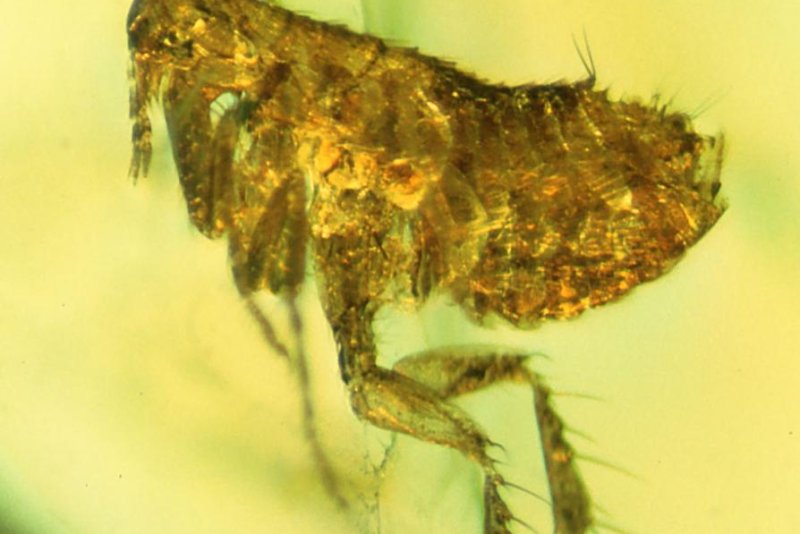Researchers think they've found evidence of an ancient strain of bubonic plague on a fossilized flea. Photo by University of Oregon State
CORVALLIS, Ore., Sept. 28 (UPI) -- Researchers have discovered a fossilized flea carrying bacteria that appears to be an ancient strain of the bubonic plague. The amber-enshrined flea was uncovered by paleontologists working in the Dominican Republic.
Scientists aren't able to verify the identity of the bacteria, which was found on the proboscis of a 20-million-year-old flea found frozen in a drop of amber. But the size, shape and location suggest a relation to Yersinia pestis.
Advanced imaging analysis revealed the strands of the fossilized coccobacillus bacteria to be made up of a combination of rod and nearly spherical shapes. Among the pathogenic bacteria carried by modern fleas, only bubonic plagues features such shapes.
"Aside from physical characteristics of the fossil bacteria that are similar to plague bacteria, their location in the rectum of the flea is known to occur in modern plague bacteria," George Poinar, Jr., an entomology researcher at Oregon State University, said in a press release. "And in this fossil, the presence of similar bacteria in a dried droplet on the proboscis of the flea is consistent with the method of transmission of plague bacteria by modern fleas."
Poinar is the lead author of a new paper on the discovery, published this week in the Journal of Medical Entomology.
Because the bacteria was found still on the tip of the proboscis, it likely became trapped in amber shortly after feeding on an infected animal, an ancient rodent species. Evidence of fleas dates back to the Jurassic Period, and Poinar has argued that the rise of disease-carrying insects likely played a role in the dinosaurs' demise.
Previous genetic studies predict the cycle of transmission and infection among plague bacteria and rodents to have evolved within the last 20,000 years.
The latest study suggests the bubonic plague may have much older roots, and potentially predates humans.
"If this is an ancient strain of Yersinia, it would be extraordinary," Poinar said. "It would show that plague is actually an ancient disease that no doubt was infecting and possibly causing some extinction of animals long before any humans existed. Plague may have played a larger role in the past than we imagined."















